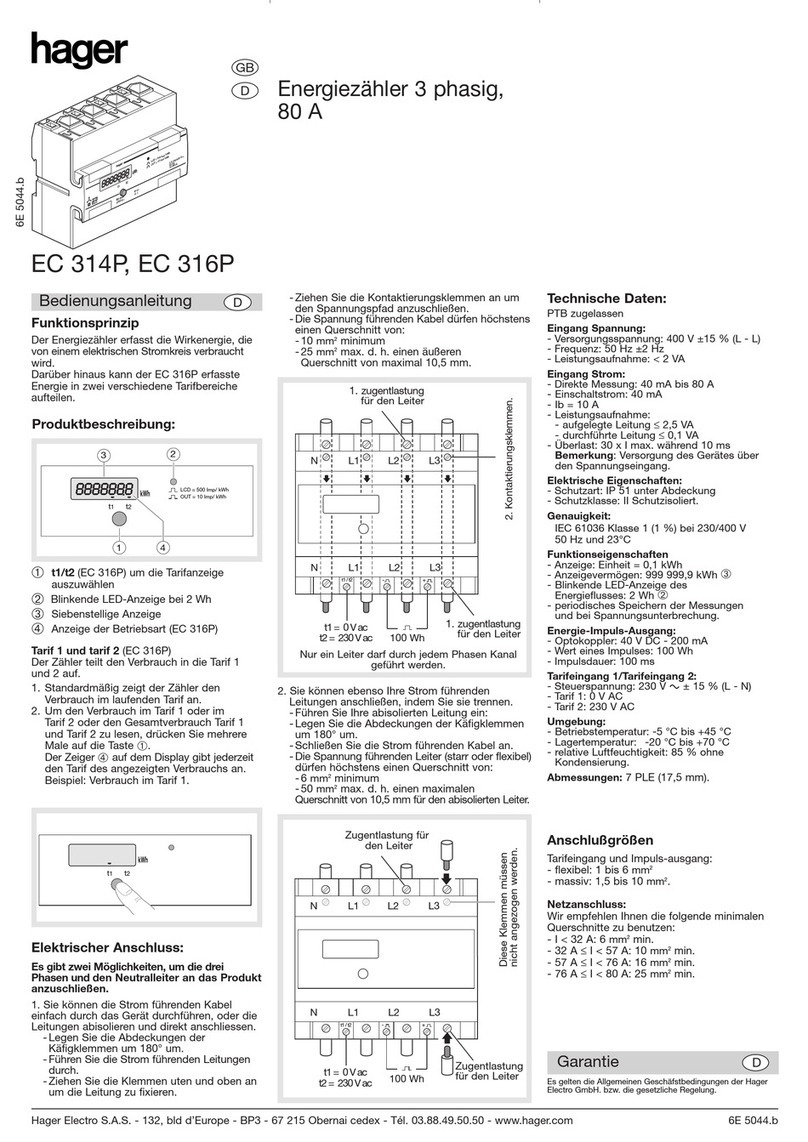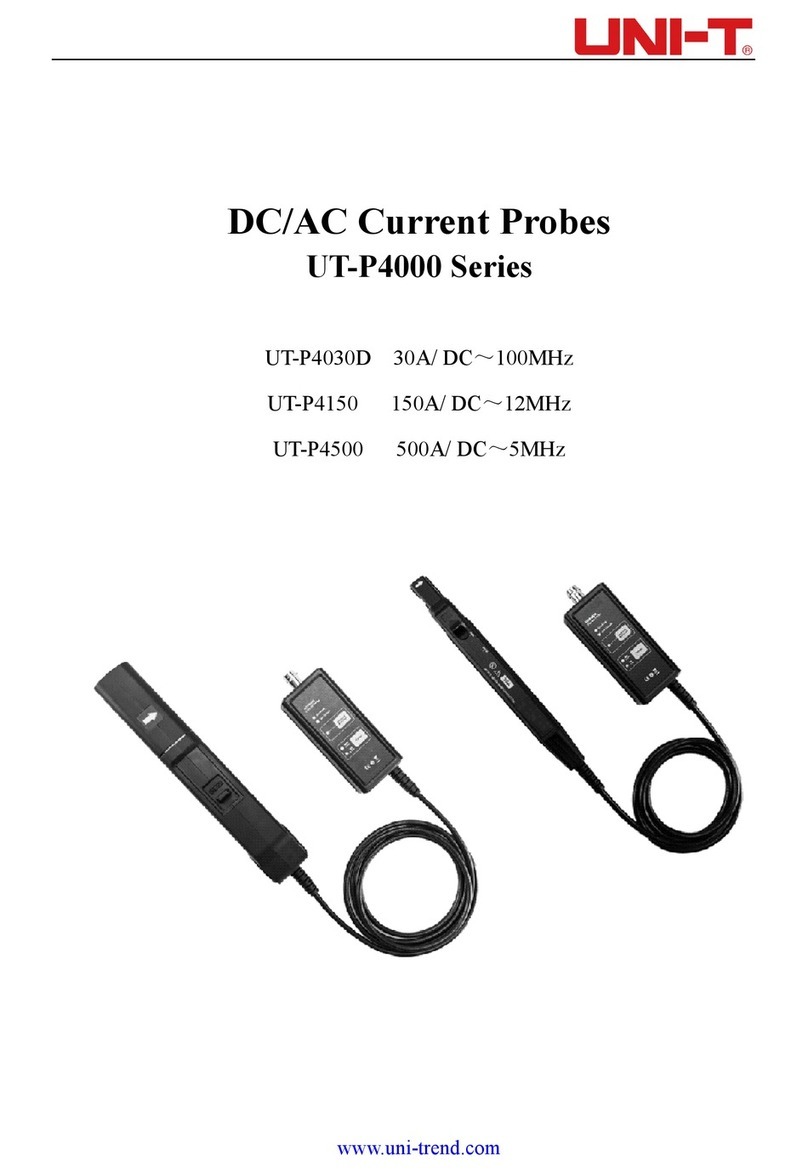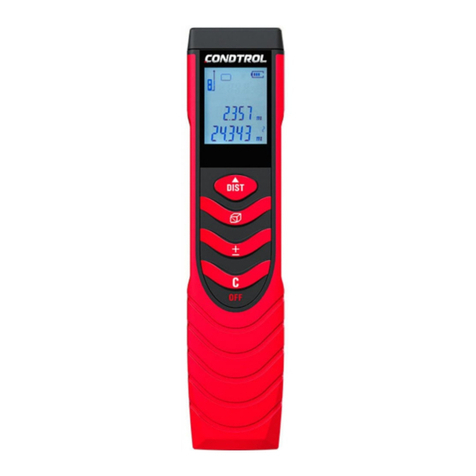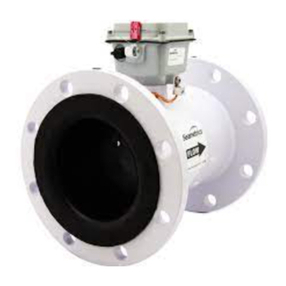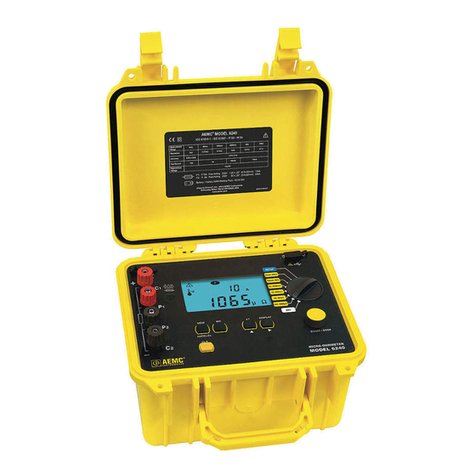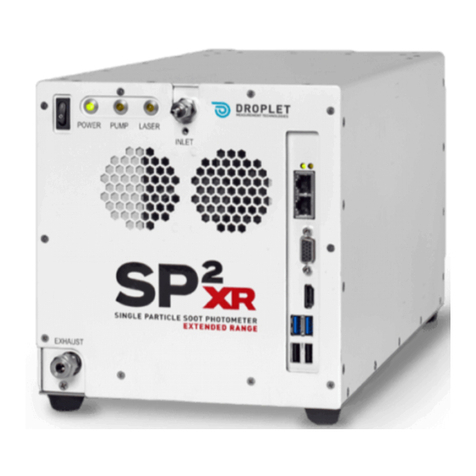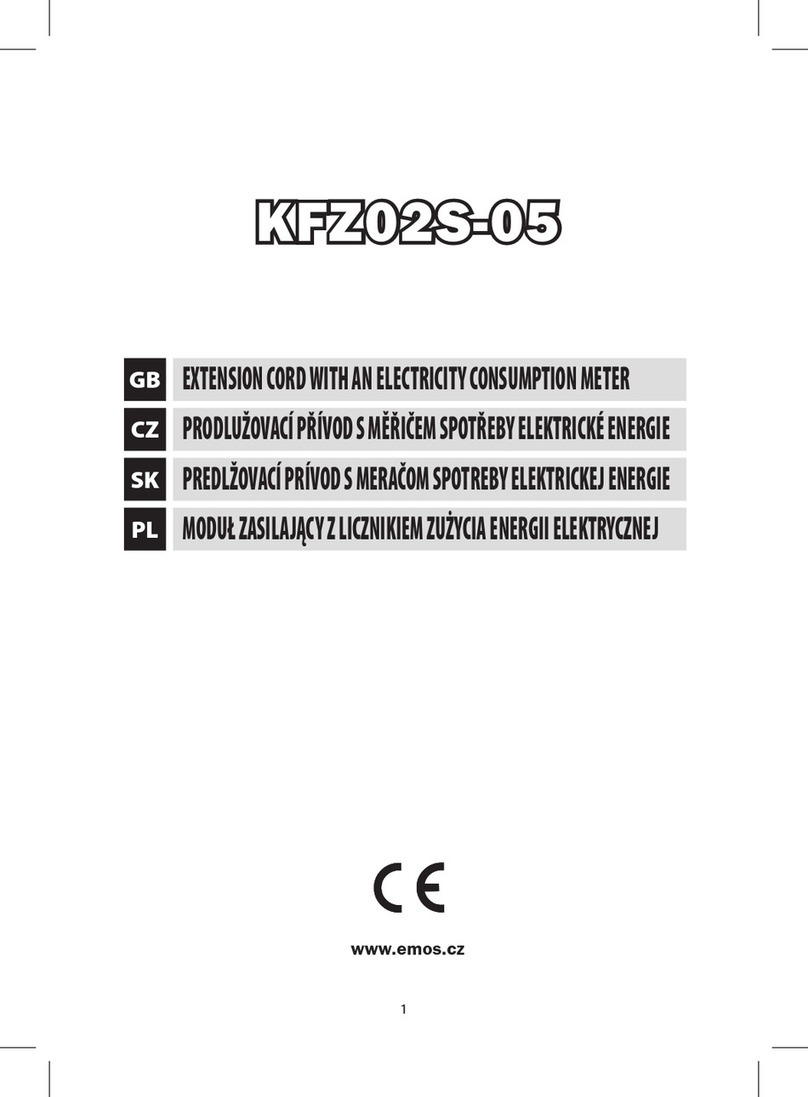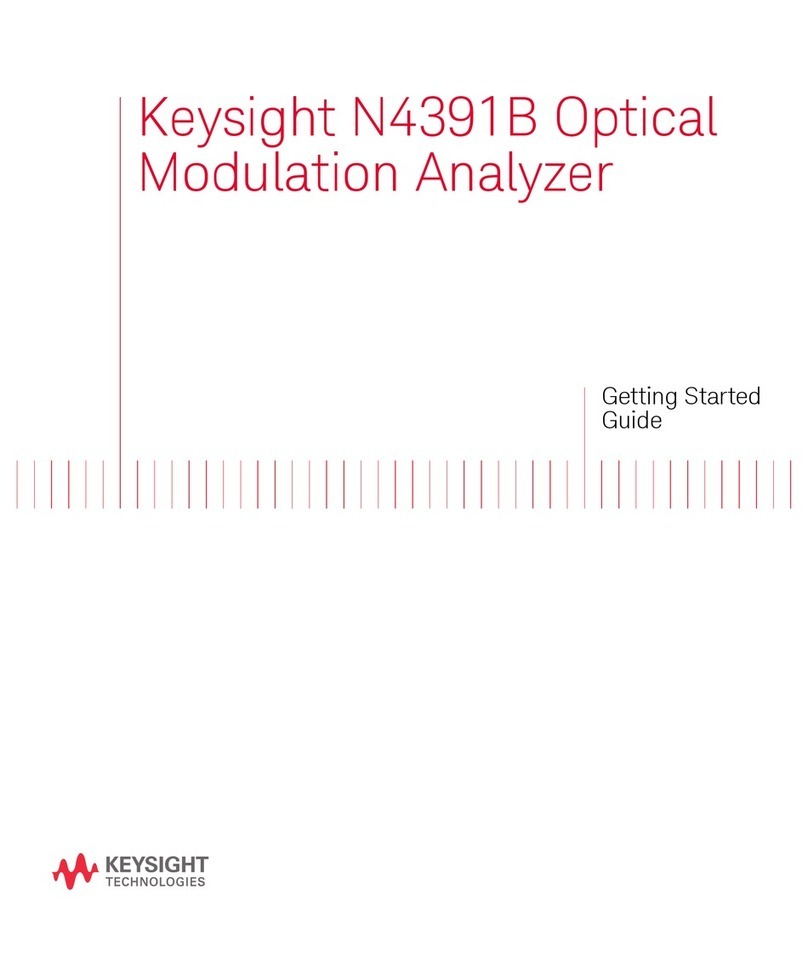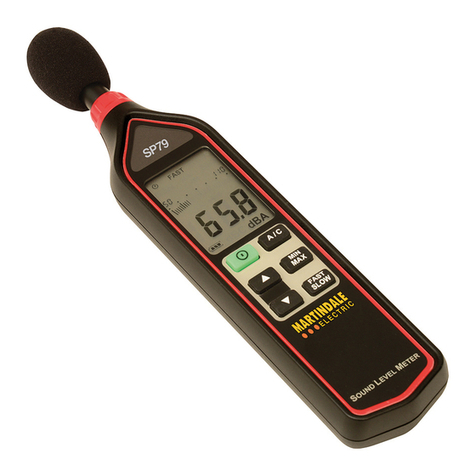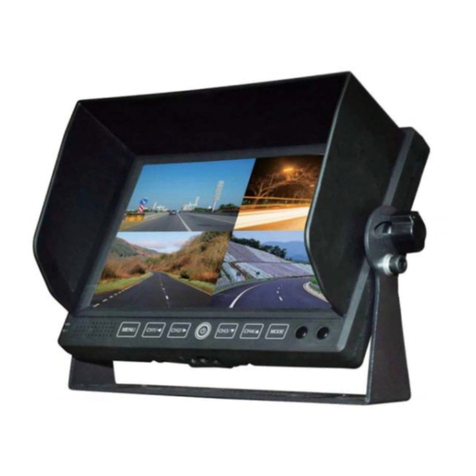Geosense VWCM-4000 User manual

V 1.3 Feb 19
I
N
S
T
R
U
C
T
I
O
N
M
A
N
U
A
L
VWCM-4000
CRACK METER

V 1.3 Feb 19
2

V 1.3 Feb 19
CONTENTS
Page
1.0 INTRODUCTION 4
1.1 General description 4
1.2 Theory of operation 5
2.0 CONFORMITY 6
3.0 MARKINGS 7
4.0 DELIVERY 8
4.1 Packaging 8
4.2 Handling 8
4.3 Inspection 8
4.4 Storage 9
5.0 INSTALLATION 10
5.1 Getting started 10
5.2 Preliminary tests 11
5.3 Setting distances 12
5.4 Installation - using re-bar anchors 13
5.5 Installation - using mechanical anchors 18
5.6 Installation - using welded anchors 23
6.0 DATA HANDLING 26
6.1 Taking readings 26
6.1.1 Portable readouts 26
6.1.2 Data loggers 26
6.2 Data reduction 27
Calibration certificate 30
6.3 Temperature considerations 31
6.3.1 Thermistor linearization 32
7.0 MAINTENANCE 33
8.0 TROUBLESHOOTING 33
9.0 SPECIFICATION 34
10.0 SPARE PARTS 36
11.0 RETURN OF GOODS 37
12.0 LIMITED WARRANTY 38
3

V 1.3 Feb 19
It is VITAL that personnel responsible for the
installation and use of the VW Crack Meter READ and
UNDERSTAND the manual, prior to working with the
equipment.
1.1 General Description
A Vibrating Wire Crack Meter can be installed singly or included in many types of
monitoring regime and can be linked to various types of readout equipment.
The primary uses for Geosense® VWCM-4000 Cracks Meters are :-
Measure movement of Joints and behaviour of Cracks in Structures.
Measure Joint and Crack movement in Rock Faces
With applications such as, but not limited to, the following :-
Bridges
Dams
Tunnels
Buildings
Rock Faces
Mines
Particular features of the Geosense® VWCM-4000 Cracks Meters are:-
Reliable long term performance.
Rugged; suitable for demanding environments.
High accuracy.
Insensitive to long cable lengths.
The Frequency signals generated by Vibrating Wire instruments are particularly
suitable for the demanding environment of civil engineering applications. The signals
are capable of long transmission distances without degradation. They are also
somewhat tolerant of damp wiring conditions and resistant to interference from
external electrical noise.
The Geosense® range of VWCM-4000 Cracks Meters can be supplied in various
configurations to suit varying installation environments and techniques.
1.0 INTRODUCTION
This manual is intended for all users of VWCM-4000 Crack Meters manufactured by
Geosense® and provides information on their installation, operation and maintenance.
4

V 1.3 Feb 19
1.1 General Description contd
1.2 Theory of Operation
The Geosense® VWCM-4000 Crack Meter is an stainless steel instrument that contains
a VW transducer that is connected to a Calibrated Spring which is in turn connected to
an extending shaft. The ends of the instrument are connected to either side of a crack or
joint so that, as structural movement occurs, the shaft is moved within the housing. The
shaft movement changes the tensions the spring which, in turn, changes the tension in
the vibrating wire. When interrogated, the vibrating wire in the transducer measures its
tension which can be converted to a linear displacement measurement in engineering
units, commonly millimetres.
The internal parts of all Geosense® VWCM-4000 Crack Meters are identical, only the
’Spring Rate’ of the spring and the length changes.
Within the Vibrating Wire transducer coil housing, two coils are located close to the axis
of the wire. When a voltage, or swept frequency excitation is briefly applied to the coils,
a magnetic field is created momentarily, causing the wire to oscillate at its’ resonant
frequency. The wire continues to oscillate for a short time through the ‘field’ of the
permanent magnet, thus generating an alternating current (sinusoidal) output. The
frequency of this current output is detected and processed by a vibrating wire readout
unit or by a data logger equipped with a vibrating wire interface. Readings can be
converted, by calculation, into ‘Engineering’ units.
Vibrating Wire Coil &
Thermistor housing
Housing
Shaft
Sensor cable
Bottom Rose joint (adjustable)Top Rose joint (fixed)
5

V 1.3 Feb 19
2.0 CONFORMITY
Geosense Limited
Nova House
Rougham Industrial Estate
Rougham, Bury St Edmunds
Email: [email protected].uk
Declaration of Conformity
We Geosense Ltd at above address declare under our sole responsibility that the Geosense products
detailed below to which this declaration relates complies with protection requirements of the following
harmonized EU Directives,
Low Voltage Directive 73/23/EEC (as amended by 93/68/EEC)
The Electromagnetic Compatibility Directive 2004/108/EC
The Construction Products Directive 89/106/EEC
Equipment description VW Crack Meter
Make/Brand Geosense
Model Numbers VWCM-4000 Crack Meter Range
Compliance has been assessed with reference to the following harmonised standard:
EN 61326-1:2006 Electrical equipment for measurement, control and laboratory use.
EMC requirements. General requirements.
A technical file for this equipment is retained at the above address.
Martin Clegg
Director
June 2014
6

V 1.3 Feb 19
3.0 MARKINGS
Geosense VW Crack Meter are labelled with the following information:-
Manufacturers name & contact details
Product name
Product Type
Operating Range
Serial number
Electrical Input & Output details
CE mark
7

V 1.3 Feb 19
4.3 Inspection
It is important to check all the equipment in the shipment as soon as possible after
taking delivery and well before installation is to be carried out. Check that all the
components detailed on the documents are included in the shipment. Check that the
equipment has not been physically damaged.
ALL Geosense® VWCM-4000 Crack Meters carry a unique identification serial
number and are supplied with individual calibration sheets.
Calibration Sheets contain VITAL information about the VW
Crack Meter. They MUST be stored in a safe place.
It is suggested that only copies should be taken to site.
4.0 DELIVERY
This section should be read by all users of VWCM-4000 Crack Meters manufactured
by Geosense® .
4.2 Handling
Whilst they are a robust devices, VWCM-4000 Crack Meters are precision
measuring instruments. They and their associated equipment should always be
handled with care during transportation, storage and installation.
Once a shipment has been inspected, it is recommended that VWCM-4000 Crack
Meters remain in their original packaging for storage or further transportation.
Cable should also be handled with care. Do not allow it to be damaged by sharp
edges and do not exert force on the cable as this my damage the internal conductors
and could render an installation useless.
4.1 Packaging
VWCM-4000 Crack Meters are packed for transportation to site. Packaging is
suitably robust to allow normal handling by transportation companies. Inappropriate
handling techniques may cause damage to the packaging and the enclosed
equipment. The packaging should be carefully inspected upon delivery and any
damage MUST be reported, as soon as possible, to both the transportation company
and Geosense.
8

V 1.3 Feb 19
4.4 Storage
All equipment should be stored in an environment that is protected from direct
sunlight. It is recommended that cables be stored in a dry environment to prevent
moisture migrating along inside them in the event of prolonged submersion of
exposed conductors.
Storage areas should be free from rodents as they have been known to damage
cables.
No other special requirements are needed for medium or long-term storage although
temperature limits should be considered when storing or transporting associated
components, such as readout equipment.
9

V 1.3 Feb 19
It is VITAL that personnel responsible for the installation and use
of the VWCM-4000 Crack Meters READ and UNDERSTAND the
manual, prior to working with the equipment.
**********
As stated before, it is vital to check all the equipment in the shipment soon after
taking delivery and in good time before installation is to be carried out. Check that
all components that are detailed on the shipping documents are included.
5.0 INSTALLATION
This section of the manual is intended for all users of VWCM-4000 Crack Meters
manufactured by Geosense® and is intended to provide guidance with respect to
their installation.
It must be remembered that no two installations will be the same and it is inevitable
that some ‘fine tuning’ of the following procedures will be required to suit specific site
conditions.
5.1 Getting started - Preparation for Installation
Prior to installation of a VWCM-4000 Crack Meters it is essential to establish and
confirm details of the installation to be carried out. Some of the main considerations
are listed below :-
1. Intended location and subsequent Protection
2. Expected Movement of the Crack or Joint (see setting range)
3. Anchoring Method
4. Cable routing and marking
The end of the cables connected to VWCM-4000 Crack Meters is marked with the
unique serial number of the sensor to which it is attached.
All instrument cables should be marked with unique identification (e.g. colour codes).
Markings should be repeated at regular intervals along the cable where multiple
cables are to be grouped together, so that in the event of cable damage, there may
be a chance that the identification could be exposed and the cables re-joined
correctly. Multiple cable marks are particularly important close to the end of the
cable. The spacing of markings can vary according to specific site requirements but
a guide of 5m to 10m separation is commonly applied (marking materials available on
request from Geosense).
Cable routing must be carefully considered so as to ensure that it is not vulnerable
from intentional or accidental damage. Vibrating Wire signals can be affected by
electrical interference (EMI), so cable routing should AVOID close proximity to
possible sources.
10

V 1.3 Feb 19
5.1 Getting started - Preparation for Installation contd...
Tools
Obtain any tools necessary to carry out the installation. The following is a brief list of
tools typically used during the installation of VWCM-4000 Crack Meters.
• Wire cutters and strippers
• Vibrating Wire Readout unit for setting the Crack Meter
• Cable Marking system / equipment ( e.g. coloured PVC Tapes )
• Marker Pen
• Hammer Drill (mains for battery powered)
• Drill Bit suitable for the materials into which the fixings will be fixed
• Power Supply for the drill (if required)
• Clean Cloth
• Suitable resin bonding material
• 4mm & 5mm ‘Allen’ (hexagonal) keys.
• Adjustable spanner
5.2 Preliminary tests
Before installing the VWCM-4000 Crack Meter, it
should be checked for proper operation.
Using a manual readout, such as a VW2106 (see
readout manual), select the B sweep range (1200 -
3550 Hz) and connect the signal wires as shown on the
right. Gently pull the shaft out to its, mechanical, full
extension stop. DO NOT TWIST THE ROD.
The readout should display an increasing reading up to
6700-7200 Digits. This value should be checked
against the Full Range reading on the individual
calibration certificate.
Gently allow the shaft to return into the housing making
sure that the pins on the shaft are aligned into the slot
on the housing.
Check the operation of the thermistor by holding the red
coil housing in your hand; the temperature reading on
the readout should slowly increase.
DO NOT TWIST THE SHAFT OF THE CRACK METER
*NB If the readout display is in ‘Period’ units a calculation must be performed to convert from
Hertz2/1000 ( Linear Digits ) units, since the calibration sheet is presented in Hertz2/1000 units.
The Geosense Readout model VW200 displays the readings in ‘Period’. The RST readout /
logger unit Model Number VW2106 displays the readings in Linear Digits. See Section 6 of this
manual for more information about units and conversion routines.
11

V 1.3 Feb 19
5.3 Anchor spacing distance
The positioning of the fixing anchors (spacing distance) will depend on the range of the
crack meter and whether extension or compression is to be monitored. If this is unknown
gauges are typically set to mid-range.
The Table below shows the suggested anchor spacing distances for various operating
ranges and measurement configurations. If, for example, a crack meter is to be used to
measure only opening of a crack, we suggest that a 10% allowance for closing
(compression) is built into the spacing so that un-expected closing does not damage the
gauge. A similar principle is recommended for the spacing of anchors for crack closing
applications.
These are only recommendations and the user should decide what positions the
anchors are required to be set.
A portable readout and the individual calibration certificate must be used in conjunction with
the table below to determine/confirm the required anchor spacing.
RANGE
(mm)
MID RANGE
50% of range (mm)
MONITOR
COMPRESSION
90% of range (mm)
MONITOR
EXTENSION
10% of range (mm)
5248.3 250.5 246.0
12.5 266.6 272.3 261.0
25 320.3 331.5 309.0
50 363.5 386.0 341.0
75 467.8 501.5 434.0
100 512.0 557.0 467.0
150 660.5 728.0 593.0
200 815.0 905.0 725.0
300 1117.0 1252.0 982.0
500 1724.0 1949.0 1499.0
All of the above are approximate dimensions and the setting, ‘centre to centre’ distance on
the crack meter may need to be adjusted using the Rose joint on the end of the shaft.
12

V 1.3 Feb 19
5.4 Installation - using Re-bar anchors
1. Cut a suitable piece of bar for use as a
template. Carefully mark the centres of the
holes that correspond to the position of the
fixing holes.
Drill one 5mm and one 6mm hole in the
template.
2. Clear the intended location of debris or dust.
3. Using the template, mark the hole centres to
be drilled.
Using a suitable masonry drill bit, drill a pilot
hole in the locations marked.
4. Select a suitable masonry drill bit for the
groutable anchors that are to be used.
12mm rebar use 18mm drill bit
16mm rebar use 20mm drill bit
5. Measure the required depth to be drilled and
set a stop on drill so that hole is drilled to the
required depth.
6. Drill both holes to the required depth.
INSTALLATION TEMPLATE
It is recommended to make and use a ‘site specific’ spacing template for the following
reasons:-
• Maintains a consistent setting distance between the anchors
• Makes marking of drill holes easier
• Helps keep anchors in place during the curing of the fixing resin
Typical materials that can be used to make the template are wood, steel or plastic.
Obviously if the material is soft ( wood / plastic ) it will wear more with use.
13

V 1.3 Feb 19
5.4 Installation - using Re-bar anchors contd...
7. Cleaning out the drill holes
before inserting bonding resin is
essential . A small brush is a good tool for
cleaning out the loose debris and the bicycle
pump is good for blowing out the dust so that
the resin can adhere well to the inner walls of
the hole.
8. To install the groutable anchors will require a
gauge template plus suitable fixing resin* and
applicator gun ( if necessary ).
9. Attach the anchors to the template with the M5
and M6 screws supplied, as shown.
BE SURE NO ELECTRICAL CABLES OR OTHER SERVICES
ARE DIRECTLY BELOW SURFACE TO BE DRILLED
14

V 1.3 Feb 19
5.4 Installation - using Re-bar anchors contd...
SELECT A NON-SHRINKING RIGID RESIN
SUITABLE FOR THE MATERIAL INTO
WHICH ANCHORS ARE BEING PLACED
10. Thoroughly mix an adequate amount of resin
and fill the anchor holes.
Where a resin cartridge is being used,
insert the cartridge nozzle into the base
of the holes and fill from the base
upwards.
11. Insert the groutable anchors to the required
depth, rotating them to ensure a good bond.
Leave the resin to cure for the time stated in
the product manufacturer’s instructions.
12. Once the resin has hardened remove the
securing screws.
15

V 1.3 Feb 19
5.4 Installation - using Re-bar anchors contd...
13. Fix the M6 bolt through the Rose joint on the
transducer end of the crack meter and into the
rebar anchor.
14. Fit the M5 bolt through the Rose joint on the
shaft end of the gauge and carefully extend
the shaft. Fix the screw into the anchor but do
not tighten it. A reading of the gauge should
be taken to ascertain correct setting before the
bolts are fully tightened.
15. Check the reading on the readout to ensure
that it is at approximately the value that
corresponds to the extension required.
This should be checked against the individual
calibration sheet for the Crack meter being
installed.
16. If the reading/setting distance is not in the
correct range then adjustments can be made
to the threaded Rose joint on the shaft of the
crack meter. To adjust, undo M5 bolt and
carefully remove Rose joint from the anchor.
Ensure that the Rose joint locking nut is loose
and turn the Rose joint clockwise to lower the
crack meter readings and anticlockwise to
raise the readings.
DO NOT ROTATE THE SHAFT
17. When the reading is correct remove the fixing
and carefully allow the crack meter to close,
16

V 1.3 Feb 19
5.4 Installation - using Re-bar anchors contd...
ensuring the alignment pins engage with the
slots on the housing tube.
Tighten the locking nut to ensure that the rose
joint is tight.
18. Re-fix the crack meter to the anchor and
tighten the screw using the Allen key.
The crack meter is now installed. Its readout cable
can be routed to a convenient location for
termination or to a data logger location.
It is strongly recommended that the crack meter is
fitted with a lined protective cover to reduce the
risk of damage and reduce the effects of
temperature changes.
ONCE INSTALLED AND THE CRACK METER’S
TEMPERATURE HAS STABILISED, IT IS IMPORTANT TO
ESTABLISH INITIAL READINGS.
ALL SUBSEQUENT READINGS WILL BE REFERENCED
TO THESE INITIAL READINGS
17

V 1.3 Feb 19
5.5 Installation - using mechanical type anchors
1. First gather all the components and tools
together. For this type of installation, this will
include:
Template
Hammer Drill
Suitable Drill Bit(s)
10 and 13mm spanners
Hammer
Adjustable spanner
4mm and 5mm Allen Keys
Anchors
Mounting blocks
Gauge with Rose joint ends
2. Clear the installation area and mark the
position of the fixings using the template.
3. Set the depth gauge on the drill to the required
depth.
4. Drill the holes for the anchors
INSTALLATION TEMPLATE
It is recommended to make and use a ‘site specific’ spacing template for the following
reasons:-
• Maintains a consistent setting distance between the anchors
• Makes marking of drill holes easier
Typical materials that can be used to make the template are wood, steel or plastic.
Obviously if the material is soft ( wood / plastic ) it will wear more with use.
18

V 1.3 Feb 19
5.5 Installation - using mechanical type anchors - cont...
5. Clean out the drill hole to ensure it is free from
dust. A bicycle pump is useful here.
6. Install the anchors - as anchor types differ, the
fixing of the anchors will vary.
7. Tighten any securing nuts / bolts to ensure that
the fixing does not move
BE SURE NO ELECTRICAL CABLES OR OTHER SERVICES
ARE DIRECTLY BELOW SURFACE TO BE DRILLED
19

V 1.3 Feb 19
5.5 Installation - using mechanical type anchors - cont...
8. Fit both the mounting blocks to the anchors.
Remember that one end has a larger and one
a smaller threaded crack meter mounting.
Use the second nut on the fixing to ‘lock’ the
mounting block onto the anchor.
9. Ensure that the larger Rose joint end is firmly
attached to the Crack meter by checking that it
fully tightened up to its locking nut.
10. Fit the larger end of the crack meter ( sensor
end ) to its mounting using the M6 bolt.
20
Table of contents
Other Geosense Measuring Instrument manuals
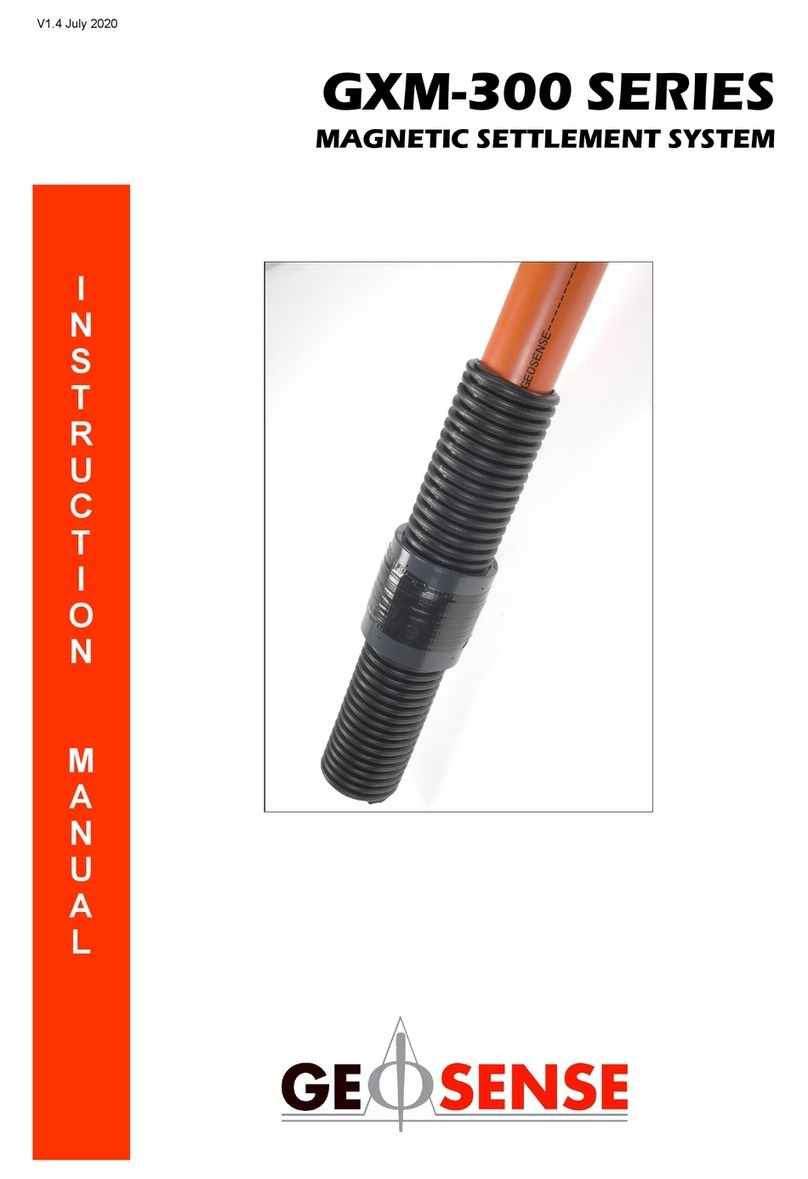
Geosense
Geosense GXM-300 Series User manual
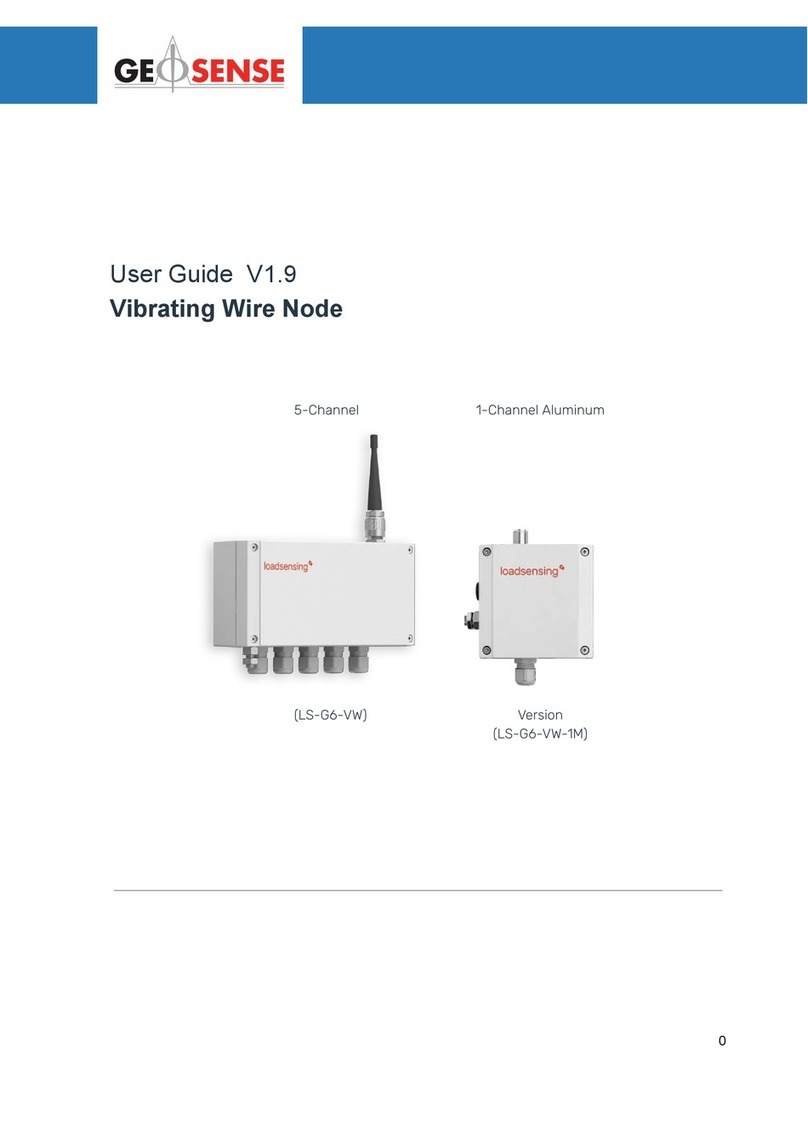
Geosense
Geosense LS-G6-VW User manual
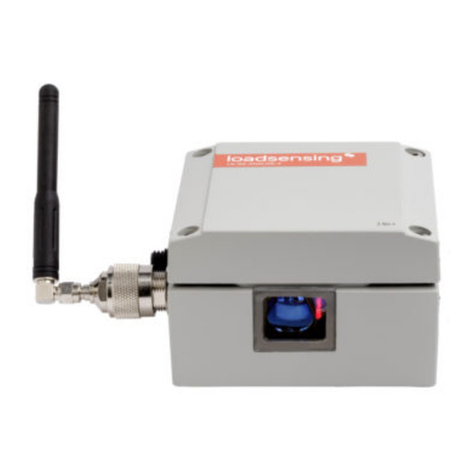
Geosense
Geosense WI-SOS 480 User manual
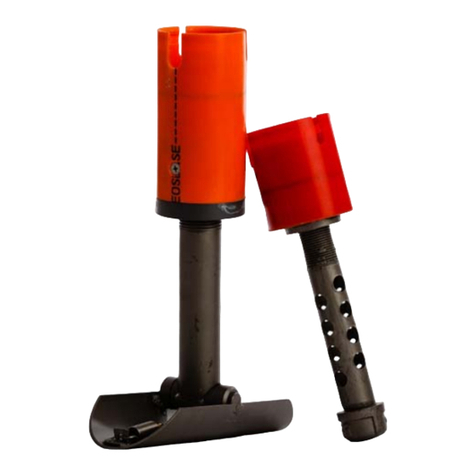
Geosense
Geosense Quick Joint User manual
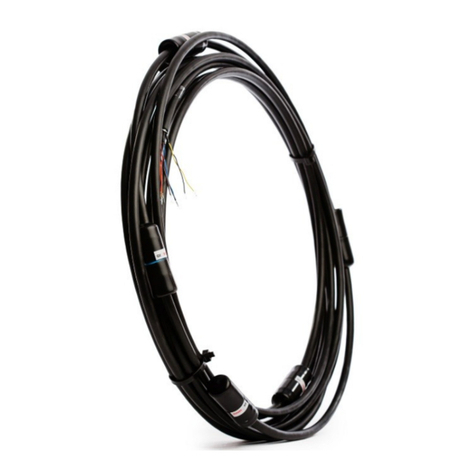
Geosense
Geosense TP-1 User manual
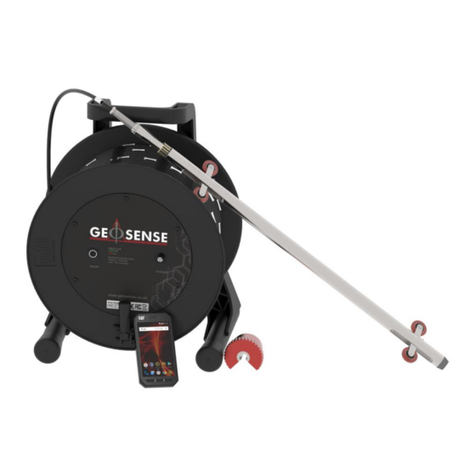
Geosense
Geosense MEMS DPI I User manual
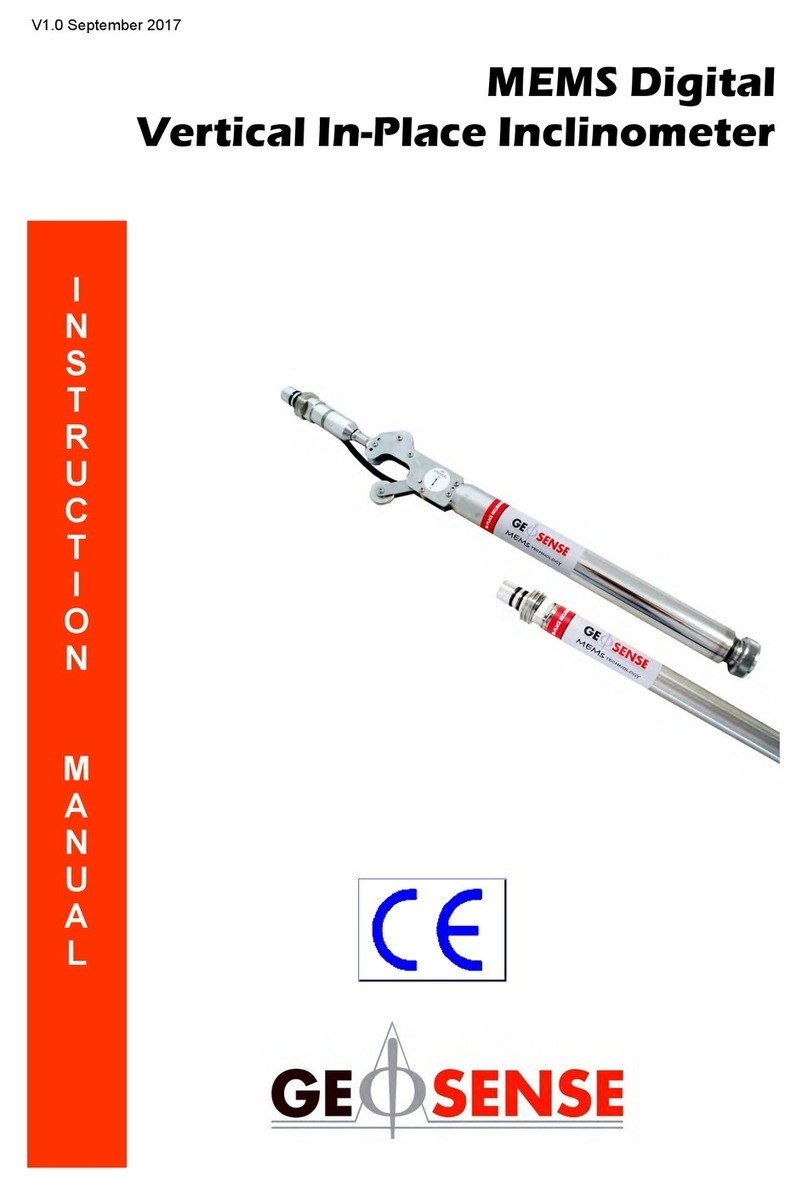
Geosense
Geosense IPI-V-1 User manual
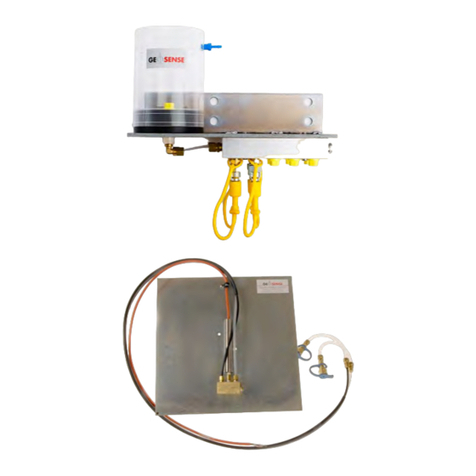
Geosense
Geosense VWLSS-200 User manual
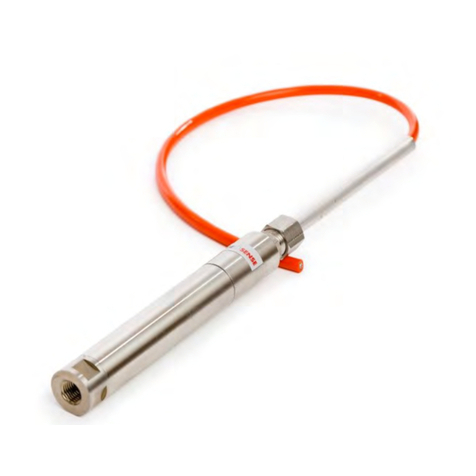
Geosense
Geosense VWPHT-3600 Series User manual


